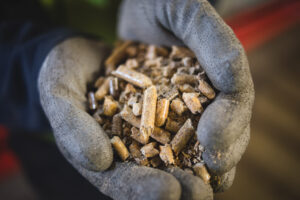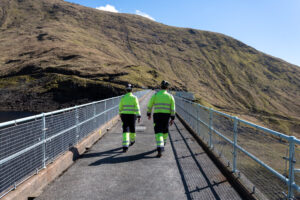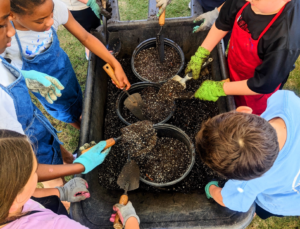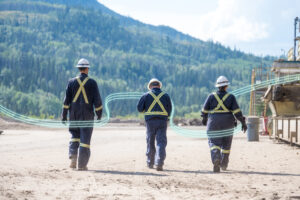At Drax, “nature positive“ means going beyond avoiding or minimising our impacts on nature and contributing to ways to restore and enhance nature.

Our Sustainability Framework outlines the three key areas where we will be taking action for nature:

- We will mitigate harm and promote circular resource use across our operations by 2030.
- We will deliver biodiversity enhancements across all our sites by 2030.
- We will support ecosystem biodiversity and resilience, contributing to measurable restoration and conservation outcomes by 2030.
This will be measurable and evidenced, backed by a science-based target for nature and action plans across our sites and sourcing areas.
Our approach for Nature Positive
The loss of nature and biodiversity poses significant risk to the stability of economies, the wellbeing of society, and the globe more generally. PwC research from 2023 found that up to 55% of the world’s GDP is exposed to material nature risk.
From the sustainable biomass that Drax produces in the US and Canada, to the water used for cooling at Drax Power Station as well as powering our hydroelectric and pumped-storage facilities in Scotland, Drax interacts with, and depends on, nature. We are committed to understanding and addressing our dependencies and impacts on nature, our nature-related risks, and contributing to actions that promote nature positive outcomes. We are committed to identifying and seizing opportunities to reduce these impacts.

Governance for nature
The Chief Sustainability Officer is responsible for the implementation of the Group’s sustainable development framework, including nature positive commitments.
The Executive Committee and the Board received updates on nature in 2024, through the respective reporting mechanisms.
Our Independent Advisory Board provides external advice on the science and evidence underpinning practices to protect nature and support nature recovery.
The Nature Expert Hub serves as the co-ordination point for nature positive actions across Drax and oversight of nature-related projects across the business.
Nature Initiatives
We recognise the importance of working alongside others to deliver on our nature positive ambitions. Here are some examples of the work we engage in across our operations:
- Southern Pellet Production (US)
- We commissioned biodiversity experts to conduct a biodiversity assessment across our US Pellet Production catchment
- Drax is actively collaborating with the Louisiana Department of Wildlife and Fisheries (LDWF) in respect of a National Fish and Wildlife Foundation (NFWF) grant to improve forest conditions of overstocked hardwood plantings.
- We are proud to acknowledge our new partnership with the Alabama Wildlife Federation (AWF), having made a financial contribution to its Land Stewardship Assistance Partnership.
- Drax is a conservation partner of The Longleaf Alliance (TLA). This includes donor-directed financial support for TLA’s Western Technical Assistance & Training Specialist, with service in Southwest Alabama, Mississippi, and Louisiana.
- Northern Pellet Production (Canada)
- In British Columbia, our purchase of low-grade wood and residues helps to avoid the burning of the material left on the forest floor, which otherwise often occurs. Removal of the residues also helps prevent and mitigate the impact of wildfires.
- Drax Power Station:
- The nearby areas of Barlow Mound and Arthur’s Wood are monitored annually, through ecological surveys with independent reporting (such as of soil health). Barlow Mound and Arthur’s Wood are also managed for wildlife habitat conservation.
- Cruachan Power Station:
- Cruachan frequently completes biodiversity surveys to monitor the species living in the surrounding habitats. This survey data has allowed the team to build a picture of the variety of mammals, birds and insects present in the area, including a significant number of protected status species.
- Lanark and Galloway Hydro Electric Schemes:
- In 2023, we completed our partnership with the Galloway Glens Scheme in South West Scotland, having contributed £100,000 over four years. This included the Dee Restoration project at Black Water, to improve instream and riparian habitats.
- We have worked alongside the Galloway Fisheries Trust and the Scottish Environment Protection Agency (SEPA) to trial and develop changes to our flow regime, to improve fish passage at our Tongland Dam on the River Dee.
- As part of the Galloway Glens Scheme, we supported a project with Galloway Fisheries Trust on salmon movement.
- ECHO Program:
- Drax is proud to support the ECHO Program in British Columbia’s collaborative effort to reduce the impacts of commercial shipping on at-risk whales. The voluntary inbound and outbound ship slowdown led by Vancouver Fraser Port Authority creates a quieter underwater environment in a critical habitat for southern resident killer whales in Haro Strait, Boundary Pass, and Swiftsure Bank.






